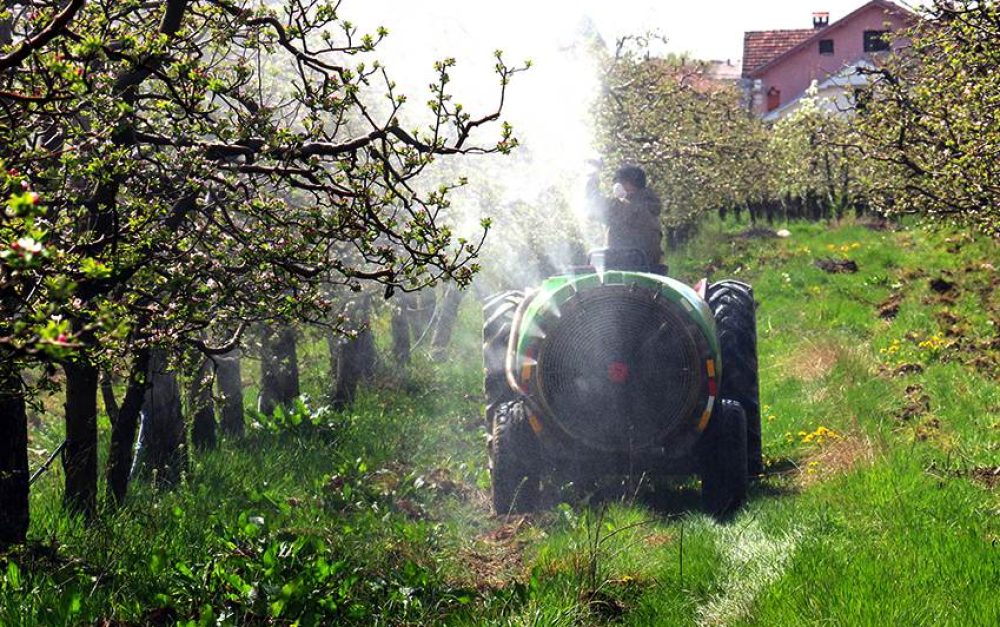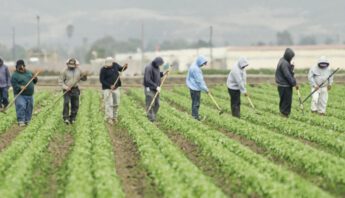Pesticide drift regularly occurs in California agricultural communities, and too often it flies under the radar. But in the past several months there have been four major drift incidents that bring the problem into sharper focus.
The findings are in
Earlier this week, Kern County officials released a report detailing a drift incident on the outskirts of Bakersfield in May, and the findings are stark. The neurotoxic pesticide chlorpyrifos, applied at least one-and-a-half hours before workers reported symptoms, drifted more than one-half mile from an orchard to the neighboring cabbage field, where it sickened farmworkers. The airborne pesticide persisted and traveled further than it was supposed to.
The United Farm Workers Foundation recounted one worker’s experience:
An hour into her shift, Aylin noticed all of the cabbage pickers around her suddenly stopped working. Then some of her co-workers fainted. Others started vomiting. Aylin also became sick. Her lips were tingling. Her mouth was dry. Aylin told us they weren’t instructed on anything related to pesticides before or after they fell ill and they had no warning.”
And in her own words, in a sworn statement to the United Farm Workers Foundation, Aylin said:
I have always known how dangerous pesticides can be. But I never thought I would one day have to go to the emergency room because of them.”
The two applicators implicated in this drift incident were assessed penalties of $50,000 in total, primarily for the five people that sought immediate medical attention. Most farmworker advocates agree that the penalty isn’t much of a deterrent.
Results from three other investigations — affecting nearly 100 farmworkers from incidents that occured outside Salinas, Watsonville and another more recently outside of Bakersfield — are pending. It may be weeks before findings from these investigations come to light.
This doesn’t have to happen
These four recent drift incidents should never have happened. But the rules for protecting workers and their communities just aren’t good enough.
Pesticides don’t stay where they’re applied, and those that are fumigated as gases or applied from air blasters are particularly prone to travel great distances. In the May incident, the chemical traveled more than 26 times the allowance set by current rules aimed at protecting fieldworkers — and more than twice as far as proposed buffer zones for schoolchildren. No-spray or no-fumigation zones near areas where people live, learn and work should be more health protective. Limiting nearby applications lessens the likelihood of problems.
Even so, some of the commonly-used pesticides in California are too hazardous at any level. This is the case for chlorpyrifos, which is particulalry damaging to kids’ developing brains. And even though the science is crystal clear on the harms of exposure to this chemical, Donald Trump’s new EPA chief Scott Pruitt reversed course on the agency’s planned ban of chlorpyrifos, and decided to keep the pesticide on the market until at least 2022.
Some officials will continue to chalk up the problem of pesticide drift to small needed tweaks in application processes, but improvements in nozzles, greater awareness of wind direction and speed, and other weather conditions are not the root problem. It’s the pesticides.
Everyday realities
Major drift incidents tend to get headline attention, but ongoing and everyday exposures harm even more farmworkers and California families.
Increasingly, science points to the fact that even in very small amounts, and in real-world combinations, pesticides can have profound and lifelong impacts on the health of farmworkers and their families. In the case of chlorpyrifos, exposure is linked to asthma, damaged working memory and developmental impacts like ADHD and autism.
As UC Berkeley labor professor Harley Shaiken told KQED’s The California Report,
Farmworkers in so many ways have become invisible. They put our food on the table, yet their well-being is often below the radar.”
When it comes to farmworkers and pesticides, it’s time to make the invisible visible.








